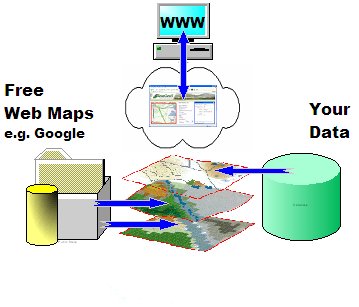 Setting up a web mapping system generally involves the following:
Setting up a web mapping system generally involves the following:
- ensuring we fully understand the requirements and data
- production of a client approved system specification
- collation of client supplied map, text and photograph data
- basic data cleaning and processing of data as required
- creation of a dedicated WebMapping site on our London servers
- upload of data as map layers or WMS tiles, depending upon the size of the dataset and precise requirements
- creation of a web page to match the client's corporate style
- setting up the gazetteer and map presentation
- testing and publishing
Unless otherwise agreed, we currently use ‘MapServer’ to serve WMS and postGIS for spatially enabled data, as these are both open source and help to reduce the project costs.
There are also optional components that can be added to web maps, including:
- 'Find my nearest' functionality, which locates the nearest feature within a defined theme
- bespoke user consultation / comment forms
- direct access, allowing the client to update the data
- data backup
- photos and hyperlinks
Once the web map has been finished the client has the option of linking to it or embedding it in their own website.